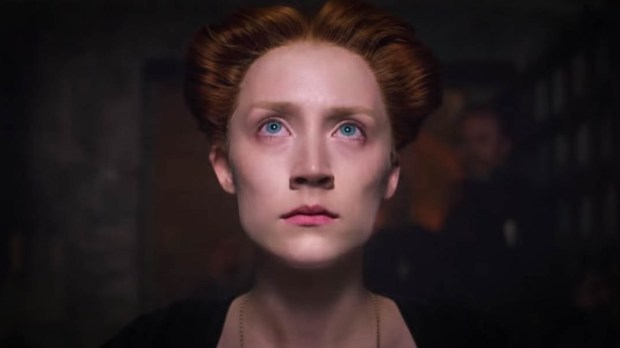If you’re headed out to see the new movie Mary, Queen of Scots this weekend, a little background might help with the appreciation of the film.
The rivalry between two queens—Mary, played by Saoirse Ronan, and Elizabeth I, portrayed by Margot Robbie—takes place amid the backdrop of the English Reformation. But contrary to popular belief, that reformation did not suddenly spring up with Elizabeth’s father, King Henry VIII. According to Msgr. Laurence J. Spiteri, author of A History of the Roman Catholic Church Until the Council of Trent, there were tensions between Rome and the Christians in these lands going back to the 7th Century. The Anglo-Saxons, having been evangelized through both Celtic monks and Roman missionaries, developed different liturgical styles and systems of Church governance. The Roman way won out in the end.
Thanks to the Norman Conquest in 1066, Rome was able to exert its influence over the English Church even more effectively, and the local Church benefited from reforms of the clergy and of education.
But the English Church, Msgr. Spiteri writes, “was not spared the tensions between kings and bishops, and sovereigns and Popes.” Nor was it spared scandals “that were similar to those going on in contemporary continental Europe.”
By the time Henry VIII came along, there were undercurrents of opposition to the Church and the papacy. “The laity was highly critical of Church wealth, resentful of the ruthless ways heretics were handled and of the political power that bishops wielded in the Kingdom, bitter on the burdens imposed by the Church’s law, and tired of papal taxation.”
This was around the time Martin Luther, in Germany, was a young monk, though there had already been moves for reformation on the Continent.
“One can be easily led to believe that the occasion for the English Reformation was begun with King Henry VIII’s determination to end his marriage with his first wife, Catherine of Aragon,” Spiteri writes. “But, the roots for the English Reformation were centuries old. By the time Henry VIII severed England’s papal allegiance, a great and long standing dissatisfaction had existed among the English laity regarding the scandalous lifestyle, wealth, power, and abuse of English clerics.”
Edward VI, son of Henry VIII and Jane Seymour, Henry’s third wife, became king upon Henry’s death in 1547. Upon his death in 1553, Mary Tudor, daughter of Henry VIII and Catherine of Aragon, succeeded him. She was a staunch Catholic and did her best to restore Roman Catholicism in England, including papal supremacy. She also launched a persecution against Protestants.
When she died in 1558, she was succeeded by her half-sister, Elizabeth I, daughter of Henry VIII and his second wife, Anne Boleyn. Though she lacked any strong religious convictions, she restored Protestantism to England. When Pope St. Pius V excommunicated her in 1570 and released her subjects from their allegiance to her, Elizabeth began a persecution of Catholics in England.
And that’s where the protagonist of Mary Queen of Scots, directed by Josie Rourke, comes in.
Elizabeth “had her Catholic cousin, Mary Queen of Scots, beheaded in 1587,” Spiteri writes. “This deed was in reaction to the pressure from King Philip II of Spain’s threats to invade England and out of fear that Roman Catholics would rally around the Roman Catholic Queen of Scots.”
Writes Meilan Solly in Smithsonian magazine, “From the beginning of her reign, Elizabeth was keenly aware of her tenuous hold on the crown. As a Protestant, she faced threats from England’s Catholic faction, which favored a rival claim to the throne—that of Mary, the Catholic Queen of Scots—over hers. In the eyes of the Catholic Church, Elizabeth was the illegitimate product of an unlawful marriage, while Mary, the paternal granddaughter of Henry VIII’s older sister Margaret, was the rightful English heir.”

